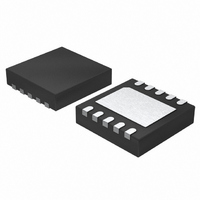MCP73837T-NVI/MF Microchip Technology, MCP73837T-NVI/MF Datasheet - Page 20

MCP73837T-NVI/MF
Manufacturer Part Number
MCP73837T-NVI/MF
Description
IC LIION CHRGR USB/AC-IN 10DFN
Manufacturer
Microchip Technology
Datasheet
1.MCP73838T-FJIMF.pdf
(30 pages)
Specifications of MCP73837T-NVI/MF
Battery Type
Lithium-Ion (Li-Ion), Lithium-Polymer (Li-Pol)
Operating Temperature
-40°C ~ 85°C
Function
Charge Management
Voltage - Supply
4.5 V ~ 6 V
Mounting Type
Surface Mount
Package / Case
10-DFN
Input Voltage
6V
Battery Charge Voltage
4.5V
Charge Current Max
1000mA
Battery Ic Case Style
DFN
No. Of Pins
10
No. Of Series Cells
1
Product
Charge Management
Output Voltage
4.2 V, 4.35 V, 4.4 V, 4.5 V
Output Current
1200 mA
Operating Supply Voltage
3.75 V to 6 V
Maximum Operating Temperature
+ 85 C
Minimum Operating Temperature
- 40 C
Mounting Style
SMD/SMT
Lead Free Status / RoHS Status
Lead free / RoHS Compliant
Lead Free Status / RoHS Status
Lead free / RoHS Compliant
Available stocks
Company
Part Number
Manufacturer
Quantity
Price
Company:
Part Number:
MCP73837T-NVI/MF
Manufacturer:
Microchip Technology
Quantity:
135
MCP73837/8
6.0
The MCP73837/8 devices are designed to operate in
conjunction with a host microcontroller or in stand-
alone applications. The MCP73837/8 devices provide
the preferred charge algorithm for Lithium-Ion and
FIGURE 6-1:
FIGURE 6-2:
(1200 mAh Li-Ion Battery).
FIGURE 6-3:
Thermal Regulation (1200 mAh Li-Ion Battery).
DS22071A-page 20
REGULATED
WALL CUBE
4.5
4.0
3.5
3.0
2.5
2.0
1.5
1.0
0.5
0.0
5.0
4.0
3.0
2.0
1.0
0.0
APPLICATIONS
0
V
R
1200 mAh Li-Ion Battery
V
R
1200 mAh Li-Ion Battery
DD
PROG
DD
PROG
1
= 5.2V
= 5.2V
= 1 k Ω
= 1 k Ω
2
C
IN1
3
Time (Minutes)
Time (Minutes)
MCP73837 Typical Stand-Alone Application Circuit.
Typical Charge Profile
Typical Charge Profile in
4
USB Port
5
6
C
IN2
7
8
9
10
1.2
1
0.8
0.6
0.4
0.2
0
1.2
0.9
0.6
0.3
0
1 ΚΩ
1 ΚΩ
1 ΚΩ
1
2
3
4
8
Lithium-Polymer cells Constant-current followed by
Constant-voltage.
alone MCP73837 application circuit, while
and
profile.
6.1
Due to the low efficiency of linear charging, the most
important factors are thermal design and cost, which
are a direct function of the input voltage, output current,
and thermal impedance between the battery charger
and the ambient cooling air. The worst-case situation is
when
Preconditioning mode to the Constant Current mode. In
this situation, the battery charger has to dissipate the
maximum power. A trade-off must be made between
the charge current, cost, and thermal requirements of
the charger.
6.1.1
Selection of the external components in
crucial to the integrity and reliability of the charging
system. The following discussion is intended as a guide
for the component selection process.
6.1.1.1
The preferred fast charge current for Lithium-Ion cells
should always follow references and guidance from
battery manufacturers. For example, programming
700 mA fast charge current for a 1000 mAh Li-Ion
battery pack if its preferred fast charge rate is 0.7C.
This will result the shortest charge cycle time without
degradation a battery's life and performance.
6.1.1.2
The worst-case power dissipation in the battery
charger occurs when the input voltage is at the
maximum and the device has transitioned from the
Preconditioning mode to the Constant-current mode. In
this case, the power dissipation is:
V
V
STAT1
STAT2
/PG
AC
USB
MCP73837
Figure 6-3
the
Application Circuit Design
COMPONENT SELECTION
Charge Current
Thermal Considerations
THERM
PROG2
PROG1
device
V
BAT
V
depict the accompanying charge
SS
Figure 6-1
10
Thermsitor
9
5
7
6
has
© 2007 Microchip Technology Inc.
transitioned
Low
depicts a typical stand-
R
PROG
Hi
C
OUT
Figure 6-1
Figure 6-2
from
Single
Li-Ion
Cell
the
is















